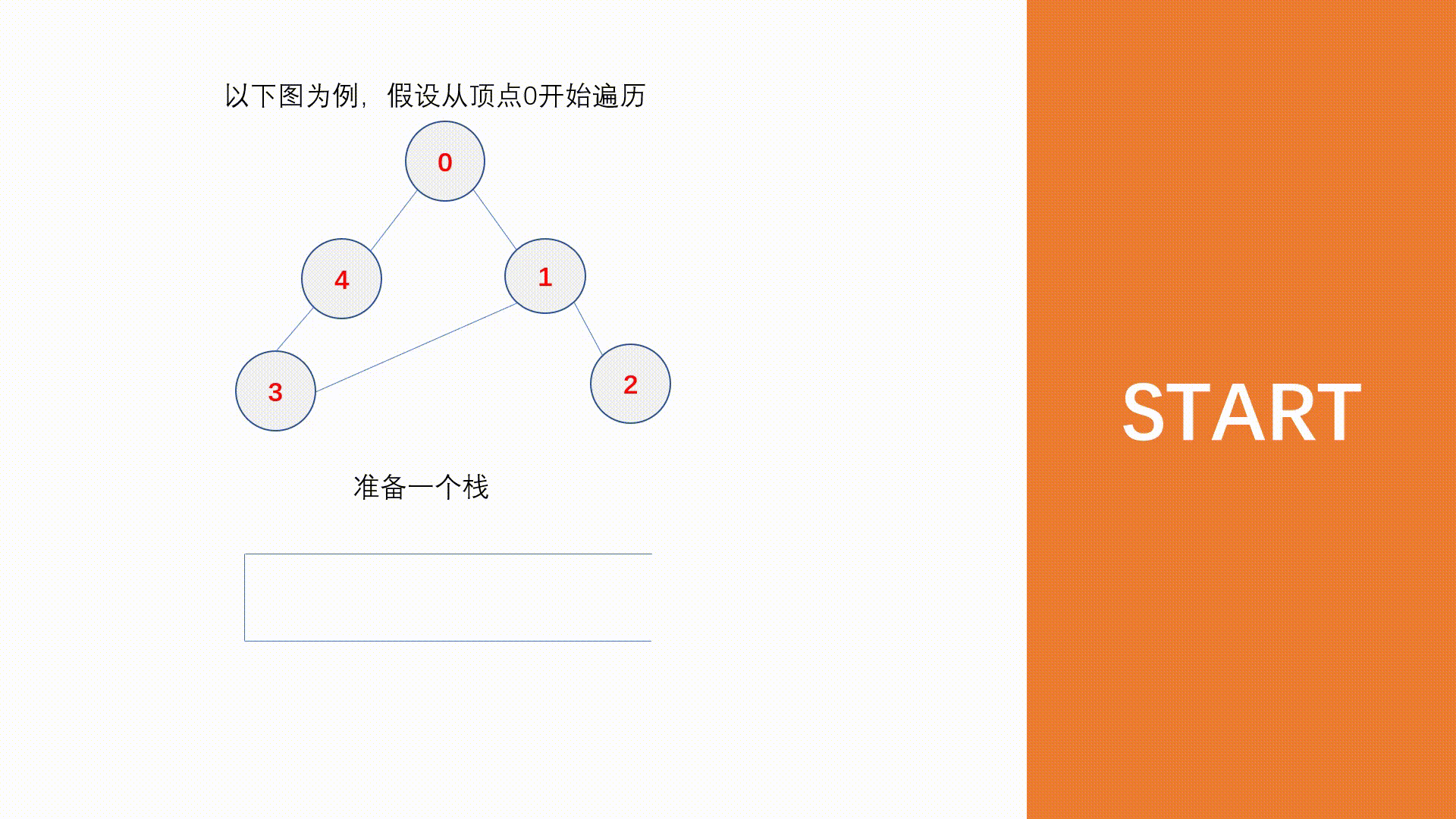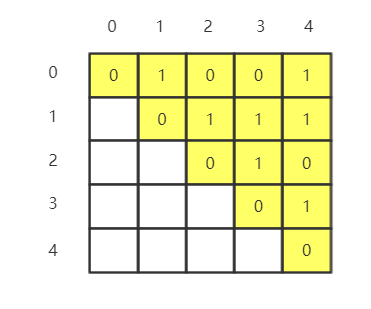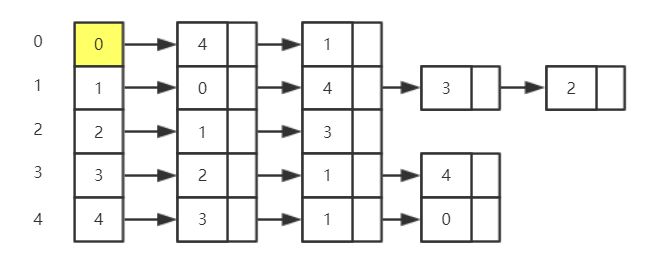- 吐血整理Java集合框架,免费送
聪明马的博客
Javajava数据结构
Java集合框架(JavaCollectionsFramework)是Java标准库中的一个重要部分。它为Java开发人员提供了一组常用的数据结构,如列表、集合、映射等,使其更容易地处理数据。在这篇博客中,我将详细介绍Java集合框架,包括它的主要特点、常用的集合类型以及如何使用它们来解决实际问题。一、Java集合框架的主要特点Java集合框架的主要特点是:统一的接口。Java集合框架提供了一组统
- 【从零到一的Java Stream,保姆级教学】
聪明马的博客
Javajava后端
JavaStream是Java8中的一项重大新功能,它提供了一种强大的功能,用于处理集合和数组等数据结构的元素序列。Stream基于lambda表达式,它允许我们使用一种简洁而直观的方式来处理数据,而不用关心底层的实现细节。本文将详细介绍JavaStream的用法。什么是StreamJavaStream是一个用于描述数据流的API,它提供了一个面向函数式编程的方式来处理集合和数组等数据结构的元素序
- YashanDB访问约束
数据库
本文内容来自YashanDB官网,原文内容请见https://doc.yashandb.com/yashandb/23.3/zh/%E6%A6%82%E5%BF%B5%...访问约束是YashanDB特有的一种关系数据结构,基于有界计算理论的访问约束模型(AC,AccessConstraint)实现:通过在数据源上建立AC,实现大数据变小的模型变换。在查询时,通过访问AC数据,缩小查询代价和提升查
- #渗透测试#批量漏洞挖掘#畅捷通T+远程命令执行漏洞
独行soc
漏洞挖掘安全web安全面试漏洞挖掘远程命令执行漏洞
免责声明本教程仅为合法的教学目的而准备,严禁用于任何形式的违法犯罪活动及其他商业行为,在使用本教程前,您应确保该行为符合当地的法律法规,继续阅读即表示您需自行承担所有操作的后果,如有异议,请立即停止本文章读。目录一、漏洞概况二、攻击特征三、应急处置方案四、深度防御建议五、后续监测要点六、漏洞POC一、漏洞概况技术原理漏洞存在于T+系统的特定接口组件,攻击者可通过构造恶意HTTP请求绕过身份验证,在
- cesium 加载本地json、GeoJson数据
前端熊猫
Cesiumjson前端
GeoJSON是一种用于编码地理数据结构的格式{"type":"Feature","geometry":{"type":"Point","coordinates":[125.6,10.1]},"properties":{"name":"某地点"}}一、直接加载GeoJSON文件//方式1:通过GeoJsonDataSource加载viewer.dataSources.add(Cesium.GeoJ
- LQB(4)-python-DFS搜索
AAA顶置摸鱼
蓝桥杯python组深度优先算法python蓝桥杯
前言DFS即深度优先搜索(Depth-FirstSearch),是一种用于遍历或搜索树或图的算法,有三种核心的应用场景(基础遍历、回溯、剪枝)。一、DFS-基础遍历1.核心原理深度优先搜索(DFS)是一种遍历或搜索树/图的算法,优先沿着一条路径尽可能深入,直到无法继续再回溯。实现方式:递归:隐式利用系统调用栈。栈模拟:显式使用栈数据结构。2.代码实现(1)递归实现(树结构)classTreeNod
- Python 队列的使用:掌握先进先出的数据结构
车载testing
python
Python队列的使用:掌握先进先出的数据结构队列是一种先进先出(FIFO)的数据结构,它在多种编程场景中都非常有用,比如任务调度、事件处理等。在Python中,我们可以通过标准库中的queue模块来实现队列。本文将详细介绍如何使用Python的queue模块来创建和操作队列。导入Queue模块使用queue模块之前,我们需要先导入它:fromqueueimportQueue创建队列创建一个队列实
- C#03项目——Typeof的用法
yue008
C#c#TypeofEnvironmentMethodInfo
知识点Typeof。获取类型对象,然后获取类型的方法。可适用于窗体控件的选择MethodInfo。发现方法的属性并提供对方法元数据的访问。本项目涉及的属性有属性/方法Name获取当前成员的名称。是属性GetParameters获取指定的方法或构造函数的参数。是方法Environment。提供有关当前环境和平台的信息以及操作它们的方法。此类不能被继承。属性/方法NewLine获取为此环境定义的换行字
- 刷题计划day29 动规01背包(一)【01背包】【分割等和子集】【最后一块石头的重量 II】
哈哈哈的懒羊羊
算法java数据结构leetcode动态规划背包问题蓝桥杯
⚡刷题计划day29动规01背包(一)开始,可以点个免费的赞哦~往期可看专栏,关注不迷路,您的支持是我的最大动力~目录背包问题前言01背包二维数组dp[i][j]关于是否放物品:关于二维dp遍历顺序:一维数组dp(滚动数组)关于一维dp遍历顺序:题目一:416.分割等和子集题目二:1049.最后一块石头的重量II背包问题前言对于面试的话,其实掌握01背包和完全背包,就够用了,最多可以再来一个多重背
- 力扣-二叉树-530 二叉搜索树的最小绝对差
夏末秋也凉
力扣#二叉树leetcode算法数据结构
思路类似于数组中计算最小绝对差,利用中序遍历是有序的,计算两两元素差代码classSolution{public:intminNUM=INT_MAX;TreeNode*pre=NULL;intgetMinimumDifference(TreeNode*root){if(root==nullptr)returnminNUM;getMinimumDifference(root->left);if(pr
- 力扣-二叉树-501 二叉搜索树的众数
夏末秋也凉
力扣#二叉树leetcode算法
思路二叉搜索树的特性就是中序遍历有序,所以思考时可以先按照有序数组思考代码classSolution{public:vectorresult;TreeNode*pre=nullptr;intcount=1;intmaxCount=0;voidtravesl(TreeNode*node){if(node==nullptr)return;travesl(node->left);if(pre!=null
- 力扣-二叉树-98 验证二叉搜索树
夏末秋也凉
力扣#二叉树leetcode算法
思路第一个特性,二叉搜索树的中序遍历是有序的,第二个特性,利用两个指针判断大小关系代码classSolution{public:TreeNode*pre=NULL;boolisValidBST(TreeNode*root){if(root==NULL)returntrue;boolleft=isValidBST(root->left);if(pre!=NULL&&pre->val>=root->v
- 《剑指 Offer》专项突破版 - 面试题 56 : 二叉搜索树中两节点的值之和(详解 C++ 实现的两种方法)
melonyzzZ
数据结构算法c++开发语言数据结构面试
目录前言一、利用哈希表二、应用双指针前言题目链接:LCR056.两数之和IV-输入二叉搜索树-力扣(LeetCode)题目:给定一棵二叉搜索树和一个值k,请判断该二叉搜索树中是否存在值之和等于k的两个节点。假设二叉搜索树中节点的值均唯一。例如,在下图所示的二叉搜索树中,存在值之和等于12的两个节点(节点5和节点7),但不存在值之和为22的两个节点。分析:解决这个问题自然需要遍历二叉树中的所有节点,
- 力扣树——满二叉树、完全二叉树、平衡二叉树、二叉搜索树、最优二叉树、红黑树
丢丢diu丢
力扣刷题思考java基础面试数据结构算法深度学习
1.满二叉树深度为h,那节点数为:2^h-12.完全二叉树深度为h,那么前h-1层都是满的,只有第h层不满,而且是从左向右紧密排列的。3.平衡二叉树1.它可以是1棵空树;2.首先它是二叉搜索树,而且它的左右子树的深度之差绝对值不能超过1;4.二叉搜索树1.它可以是空树2.若不空,那么它中序遍历(左中右)必须是严格递增序列,不存在相同的元素;5.最优二叉树给定N个权值作为N个叶子节点,构造一棵二叉树
- 力扣 hot 100 —— 15.三数之和
01_
leetcode算法三数之和
题目描述:给你一个整数数组nums,判断是否存在三元组[nums[i],nums[j],nums[k]]满足i!=j、i!=k且j!=k,同时还满足nums[i]+nums[j]+nums[k]==0。请你返回所有和为0且不重复的三元组。注意:答案中不可以包含重复的三元组。解法思路://定位一个+双指针遍历查找//选定一个,然后在剩余中查找满足条件,为了好判断移动方向,可对数组进行排序//当三者和
- 深入理解Java的集合框架
一碗黄焖鸡三碗米饭
java
深入理解Java的集合框架Java集合框架(JavaCollectionsFramework,简称JCF)是Java语言中最常用的API之一,它为开发者提供了强大且灵活的数据结构支持。集合框架通过一系列的接口和实现类,帮助我们管理、存储和操作数据。Java集合框架包括常见的List、Set、Map等接口及其具体实现类,合理选择适当的集合类型,对于程序性能和代码可维护性至关重要。本文将深入解析Jav
- 02.19 构造函数
Unique_yt
c++算法开发语言
1.思维导图2.封装一个mystring类,拥有私有成员:char*pintlen需要让以下代码编译通过,并实现对应功能:mystringstr="hello";mystringptr;ptr.copy(str);ptr.append(str);ptr.show();输出ptr代表的字符串ptr.compare(str);比较ptr和str是否一样ptr.swap(str);交换ptr和str的内
- C++ STL容器大全 string vector stack queue list priority_queue set map pair
luckyyunji
C++数据结构c++
数据结构(容器)string类Vectorvector向量->不定长数组#include定义vector方法一vectorv1;vector>v2;vector>>v3;方法二vectorv1(5,10);vector>v2(5,vector(5,10));vector>>v3(5,vector(5,vector(5,10)))尾插尾删尾插v.push_back(123);尾删v.pop_back
- 【c++】容器:vector、list、map
大姨妈V
c++【c++从入门到精通】学习笔记
【c++】容器1.容器2.顺序容器3.向量4.双向链表5.关联容器6.映射参考:《c++从入门到精通》人民邮电出版社标准模板库STL的c++最有特色、最实用的部分之一。标准模板库包含了容器类、迭代器和算法三部分。容器:容器就是可以用于存放各种类型数据的数据结构。迭代器:迭代器可依次存取容器中的元素,在C++中称迭代器为指针,它们提供了访问容器、序列中每个元素的方法。算法:是用来操作容器中的元素的函
- STL-vector,set,string,map,queue,priority_queue,stack,pair算法笔记
cloudless_sky
STLc++stl
STL:standardtemplatelibrary标准模板库,封装了很多实用的容器。(一)vectorvector是一个容器。是个类。底层数据结构是数组。vector:向量,变长数组,即“长度根据需要而自动改变的数组”。使用前提:#includeusingnamespacestd;1、vector定义vectorname;以上是长度可以根据需要变化的一位数组,typename可以是任何基本类型
- 从C语言的角度重构数据结构系列(十三)-位运算
文宇肃然
数据结构常见算法原理讲解C语言数据结构
位运算简介位运算位运算就是基于整数的二进制表示进行的运算。由于计算机内部就是以二进制来存储数据,位运算是相当快的。基本的位运算共6种,分别为按位与、按位或、按位异或、按位取反、左移和右移。运算运算符数学符号表示解释与&&、and只有两个对应位都为1时才为1或||、or只要两个对应位中有一个1时就为1异或^、xor只有两个对应位不同时才为1左移假设要将一个无符号整数乘以2。可以简单地将所有位向左边移
- 市面上常见的文件系统及其数据结构和目录结构概述
The god of big data
教程大Big数据Data数据结构java服务器linux云计算openstack
1.ext4文件系统数据结构:超级块:包含整个文件系统的元信息,如块总数、空闲块数、inode总数等。inode:每个文件或目录都有一个inode,包含文件的元数据,如文件大小、权限、时间戳等。块位图:记录哪些块已被使用,哪些块是空闲的。inode位图:记录哪些inode已被使用,哪些是空闲的。块组:文件系统被划分为多个块组,每个块组包含一组连续的块。目录项:目录文件包含目录项,每个目录项指向一个
- Python学习笔记 - Python数据类型
yunfan188
#Python学习笔记PythonPython数据类型
前言在Python语言中,所有的数据类型都是类,每一个变量都是类的“实例”。没有基本数据类型的概念,所以整数、浮点数和字符串也都是类。Python有6种标准数据类型:数字、字符串、列表、元组、集合和字典,而列表、元组、集合和字典可以保存多项数据,它们每一个都是一种数据结构,因此可以称这四种为“数据结构”类型。本文我们主要介绍数字和字符串类型。一、数字类型Python数字类型有4种:整数类型、浮点数
- 人工智能与机器学习入门:决策树应用
决策树机器学习入门
在人工智能与机器学习入门:使用Kaggle完成Titanic推断学习一文中,给出了使用Kaggle进行机器学习入门的方法,本文基于上文的需求。尝试使用决策树模型来训练数据,并进行test数据集的测试。什么是决策树决策树,简单来讲可以认为是一个大的ifelse判断树,有了决策树后,测试集中的数据便可以使用该决策树进行判断了。比如根据Titanic的训练数据构造了上次决策树后,便可以根据测试数据的性别
- 函数式编程倡导的「不可变数据结构」如何保证性能
编程
在函数式编程(FunctionalProgramming,简称FP)中,不可变数据结构(ImmutableDataStructures)是一个核心概念。与传统的可变数据结构相比,不可变数据结构不可修改,而是通过创建新的数据结构来表达数据的变更。这一特点使得函数式编程能够简化并行计算、避免副作用,进而提高程序的可靠性和可维护性。然而,不可变数据结构可能带来的性能问题,例如内存的使用、数据复制的成本等
- HarmonyOS NEXT开发:通过线性容器实现数组指导
「已注销」
鸿蒙开发HarmonyOSOpenHarmony开发语言前端服务器harmonyos华为鸿蒙鸿蒙系统
线性容器实现能按顺序访问的数据结构,其底层主要通过数组实现,包括ArrayList、Vector、List、LinkedList、Deque、Queue、Stack七种。线性容器,充分考虑了数据访问的速度,运行时(Runtime)通过一条字节码指令就可以完成增、删、改、查等操作。ArrayListArrayList即动态数组,可用来构造全局的数组对象。当需要频繁读取集合中的元素时,推荐使用Arra
- R语言中的函数32:seq_along()
zoujiahui_2018
#R语言中的函数r语言开发语言
介绍seq_along函数在R语言中用于生成一个整数序列,其长度与给定对象的长度相同。这个函数特别有用,当你想要创建一个索引序列来遍历一个向量或列表时。用法seq_along(x)参数x:任何R对象(如向量、列表等)。返回值:返回一个从1到x的长度的整数序列。示例#创建一个向量vec<-c("a","b","c")#使用seq_along生成索引indices<-seq_along(vec)pri
- 深度优先探索
^O^凡人多烦事
深度优先算法
DFS:时间复杂度:一位数组:O(n)二维数组+标记:O(n^2),有时候还可能使O(2^n),总而言之DFS的时间复杂度比较高。(个人认为)深度优先搜索算法(DFS)原理:深度优先搜索(DepthFirstSearch,DFS)是一种用于遍历或搜索树或图的算法。该方法从根节点(选择任意一个顶点作为起始节点,在无向图中适用)开始,尽可能深地沿着每条分支进行探索直到不能再前进为止;之后回退并重复这一
- 图数据库Neo4j面试内容整理-Neo4j的性能
不务正业的猿
面试Neo4j数据库neo4j面试职场和发展图数据库
Neo4j的性能是它作为图数据库的重要特性之一。Neo4j在处理图数据时,通过优化图的存储、查询和遍历等方面,提供了高效的性能,特别适合用于需要处理复杂关系和多层次连接的应用场景,如社交网络、推荐系统、知识图谱等。以下是Neo4j性能的几个关键方面:1.图数据结构的优势
- 遍历HashMap,有6种方式,你学会了没?
程序员猫哥
pythonjava开发语言
在Java中,有多种方式可以遍历HashMap,下面为你详细介绍几种常见的遍历方法。1,使用keySet()遍历键,再通过键获取值创建一个HashMap对象,并向其中添加一些键值对。使用map.keySet()方法获取HashMap中所有键的集合。通过for-each循环遍历这个键的集合。在循环体中,使用map.get(key)方法根据当前键获取对应的值,并将键和值打印输出。packagecom.
- 继之前的线程循环加到窗口中运行
3213213333332132
javathreadJFrameJPanel
之前写了有关java线程的循环执行和结束,因为想制作成exe文件,想把执行的效果加到窗口上,所以就结合了JFrame和JPanel写了这个程序,这里直接贴出代码,在窗口上运行的效果下面有附图。
package thread;
import java.awt.Graphics;
import java.text.SimpleDateFormat;
import java.util
- linux 常用命令
BlueSkator
linux命令
1.grep
相信这个命令可以说是大家最常用的命令之一了。尤其是查询生产环境的日志,这个命令绝对是必不可少的。
但之前总是习惯于使用 (grep -n 关键字 文件名 )查出关键字以及该关键字所在的行数,然后再用 (sed -n '100,200p' 文件名),去查出该关键字之后的日志内容。
但其实还有更简便的办法,就是用(grep -B n、-A n、-C n 关键
- php heredoc原文档和nowdoc语法
dcj3sjt126com
PHPheredocnowdoc
<!doctype html>
<html lang="en">
<head>
<meta charset="utf-8">
<title>Current To-Do List</title>
</head>
<body>
<?
- overflow的属性
周华华
JavaScript
<!DOCTYPE html PUBLIC "-//W3C//DTD XHTML 1.0 Transitional//EN" "http://www.w3.org/TR/xhtml1/DTD/xhtml1-transitional.dtd">
<html xmlns="http://www.w3.org/1999/xhtml&q
- 《我所了解的Java》——总体目录
g21121
java
准备用一年左右时间写一个系列的文章《我所了解的Java》,目录及内容会不断完善及调整。
在编写相关内容时难免出现笔误、代码无法执行、名词理解错误等,请大家及时指出,我会第一时间更正。
&n
- [简单]docx4j常用方法小结
53873039oycg
docx
本代码基于docx4j-3.2.0,在office word 2007上测试通过。代码如下:
import java.io.File;
import java.io.FileInputStream;
import ja
- Spring配置学习
云端月影
spring配置
首先来看一个标准的Spring配置文件 applicationContext.xml
<?xml version="1.0" encoding="UTF-8"?>
<beans xmlns="http://www.springframework.org/schema/beans"
xmlns:xsi=&q
- Java新手入门的30个基本概念三
aijuans
java新手java 入门
17.Java中的每一个类都是从Object类扩展而来的。 18.object类中的equal和toString方法。 equal用于测试一个对象是否同另一个对象相等。 toString返回一个代表该对象的字符串,几乎每一个类都会重载该方法,以便返回当前状态的正确表示.(toString 方法是一个很重要的方法) 19.通用编程:任何类类型的所有值都可以同object类性的变量来代替。
- 《2008 IBM Rational 软件开发高峰论坛会议》小记
antonyup_2006
软件测试敏捷开发项目管理IBM活动
我一直想写些总结,用于交流和备忘,然都没提笔,今以一篇参加活动的感受小记开个头,呵呵!
其实参加《2008 IBM Rational 软件开发高峰论坛会议》是9月4号,那天刚好调休.但接着项目颇为忙,所以今天在中秋佳节的假期里整理了下.
参加这次活动是一个朋友给的一个邀请书,才知道有这样的一个活动,虽然现在项目暂时没用到IBM的解决方案,但觉的参与这样一个活动可以拓宽下视野和相关知识.
- PL/SQL的过程编程,异常,声明变量,PL/SQL块
百合不是茶
PL/SQL的过程编程异常PL/SQL块声明变量
PL/SQL;
过程;
符号;
变量;
PL/SQL块;
输出;
异常;
PL/SQL 是过程语言(Procedural Language)与结构化查询语言(SQL)结合而成的编程语言PL/SQL 是对 SQL 的扩展,sql的执行时每次都要写操作
- Mockito(三)--完整功能介绍
bijian1013
持续集成mockito单元测试
mockito官网:http://code.google.com/p/mockito/,打开documentation可以看到官方最新的文档资料。
一.使用mockito验证行为
//首先要import Mockito
import static org.mockito.Mockito.*;
//mo
- 精通Oracle10编程SQL(8)使用复合数据类型
bijian1013
oracle数据库plsql
/*
*使用复合数据类型
*/
--PL/SQL记录
--定义PL/SQL记录
--自定义PL/SQL记录
DECLARE
TYPE emp_record_type IS RECORD(
name emp.ename%TYPE,
salary emp.sal%TYPE,
dno emp.deptno%TYPE
);
emp_
- 【Linux常用命令一】grep命令
bit1129
Linux常用命令
grep命令格式
grep [option] pattern [file-list]
grep命令用于在指定的文件(一个或者多个,file-list)中查找包含模式串(pattern)的行,[option]用于控制grep命令的查找方式。
pattern可以是普通字符串,也可以是正则表达式,当查找的字符串包含正则表达式字符或者特
- mybatis3入门学习笔记
白糖_
sqlibatisqqjdbc配置管理
MyBatis 的前身就是iBatis,是一个数据持久层(ORM)框架。 MyBatis 是支持普通 SQL 查询,存储过程和高级映射的优秀持久层框架。MyBatis对JDBC进行了一次很浅的封装。
以前也学过iBatis,因为MyBatis是iBatis的升级版本,最初以为改动应该不大,实际结果是MyBatis对配置文件进行了一些大的改动,使整个框架更加方便人性化。
- Linux 命令神器:lsof 入门
ronin47
lsof
lsof是系统管理/安全的尤伯工具。我大多数时候用它来从系统获得与网络连接相关的信息,但那只是这个强大而又鲜为人知的应用的第一步。将这个工具称之为lsof真实名副其实,因为它是指“列出打开文件(lists openfiles)”。而有一点要切记,在Unix中一切(包括网络套接口)都是文件。
有趣的是,lsof也是有着最多
- java实现两个大数相加,可能存在溢出。
bylijinnan
java实现
import java.math.BigInteger;
import java.util.regex.Matcher;
import java.util.regex.Pattern;
public class BigIntegerAddition {
/**
* 题目:java实现两个大数相加,可能存在溢出。
* 如123456789 + 987654321
- Kettle学习资料分享,附大神用Kettle的一套流程完成对整个数据库迁移方法
Kai_Ge
Kettle
Kettle学习资料分享
Kettle 3.2 使用说明书
目录
概述..........................................................................................................................................7
1.Kettle 资源库管
- [货币与金融]钢之炼金术士
comsci
金融
自古以来,都有一些人在从事炼金术的工作.........但是很少有成功的
那么随着人类在理论物理和工程物理上面取得的一些突破性进展......
炼金术这个古老
- Toast原来也可以多样化
dai_lm
androidtoast
Style 1: 默认
Toast def = Toast.makeText(this, "default", Toast.LENGTH_SHORT);
def.show();
Style 2: 顶部显示
Toast top = Toast.makeText(this, "top", Toast.LENGTH_SHORT);
t
- java数据计算的几种解决方法3
datamachine
javahadoopibatisr-languer
4、iBatis
简单敏捷因此强大的数据计算层。和Hibernate不同,它鼓励写SQL,所以学习成本最低。同时它用最小的代价实现了计算脚本和JAVA代码的解耦,只用20%的代价就实现了hibernate 80%的功能,没实现的20%是计算脚本和数据库的解耦。
复杂计算环境是它的弱项,比如:分布式计算、复杂计算、非数据
- 向网页中插入透明Flash的方法和技巧
dcj3sjt126com
htmlWebFlash
将
Flash 作品插入网页的时候,我们有时候会需要将它设为透明,有时候我们需要在Flash的背面插入一些漂亮的图片,搭配出漂亮的效果……下面我们介绍一些将Flash插入网页中的一些透明的设置技巧。
一、Swf透明、无坐标控制 首先教大家最简单的插入Flash的代码,透明,无坐标控制: 注意wmode="transparent"是控制Flash是否透明
- ios UICollectionView的使用
dcj3sjt126com
UICollectionView的使用有两种方法,一种是继承UICollectionViewController,这个Controller会自带一个UICollectionView;另外一种是作为一个视图放在普通的UIViewController里面。
个人更喜欢第二种。下面采用第二种方式简单介绍一下UICollectionView的使用。
1.UIViewController实现委托,代码如
- Eos平台java公共逻辑
蕃薯耀
Eos平台java公共逻辑Eos平台java公共逻辑
Eos平台java公共逻辑
>>>>>>>>>>>>>>>>>>>>>>>>>>>>>>>>>>>>>>>
蕃薯耀 2015年6月1日 17:20:4
- SpringMVC4零配置--Web上下文配置【MvcConfig】
hanqunfeng
springmvc4
与SpringSecurity的配置类似,spring同样为我们提供了一个实现类WebMvcConfigurationSupport和一个注解@EnableWebMvc以帮助我们减少bean的声明。
applicationContext-MvcConfig.xml
<!-- 启用注解,并定义组件查找规则 ,mvc层只负责扫描@Controller -->
<
- 解决ie和其他浏览器poi下载excel文件名乱码
jackyrong
Excel
使用poi,做传统的excel导出,然后想在浏览器中,让用户选择另存为,保存用户下载的xls文件,这个时候,可能的是在ie下出现乱码(ie,9,10,11),但在firefox,chrome下没乱码,
因此必须综合判断,编写一个工具类:
/**
*
* @Title: pro
- 挥洒泪水的青春
lampcy
编程生活程序员
2015年2月28日,我辞职了,离开了相处一年的触控,转过身--挥洒掉泪水,毅然来到了兄弟连,背负着许多的不解、质疑——”你一个零基础、脑子又不聪明的人,还敢跨行业,选择Unity3D?“,”真是不自量力••••••“,”真是初生牛犊不怕虎•••••“,••••••我只是淡淡一笑,拎着行李----坐上了通向挥洒泪水的青春之地——兄弟连!
这就是我青春的分割线,不后悔,只会去用泪水浇灌——已经来到
- 稳增长之中国股市两点意见-----严控做空,建立涨跌停版停牌重组机制
nannan408
对于股市,我们国家的监管还是有点拼的,但始终拼不过飞流直下的恐慌,为什么呢?
笔者首先支持股市的监管。对于股市越管越荡的现象,笔者认为首先是做空力量超过了股市自身的升力,并且对于跌停停牌重组的快速反应还没建立好,上市公司对于股价下跌没有很好的利好支撑。
我们来看美国和香港是怎么应对股灾的。美国是靠禁止重要股票做空,在
- 动态设置iframe高度(iframe高度自适应)
Rainbow702
JavaScriptiframecontentDocument高度自适应局部刷新
如果需要对画面中的部分区域作局部刷新,大家可能都会想到使用ajax。
但有些情况下,须使用在页面中嵌入一个iframe来作局部刷新。
对于使用iframe的情况,发现有一个问题,就是iframe中的页面的高度可能会很高,但是外面页面并不会被iframe内部页面给撑开,如下面的结构:
<div id="content">
<div id=&quo
- 用Rapael做图表
tntxia
rap
function drawReport(paper,attr,data){
var width = attr.width;
var height = attr.height;
var max = 0;
&nbs
- HTML5 bootstrap2网页兼容(支持IE10以下)
xiaoluode
html5bootstrap
<!DOCTYPE html>
<html>
<head lang="zh-CN">
<meta charset="UTF-8">
<meta http-equiv="X-UA-Compatible" content="IE=edge">




